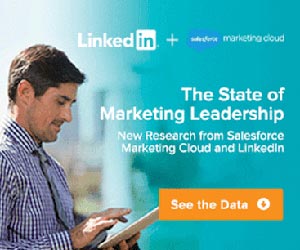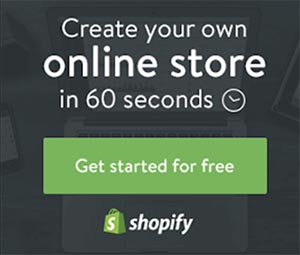As an online publisher, it is absolutely essential to me that my advertisers succeed, since your success and mine are nothing less than one and the same.
So in order to help all of us succeed, here are some concepts and techniques which have brought me (as well as many others) results. I wanted to offer some of this information in the event that some of you might be, at least, somewhat new (or maybe totally new!) to online advertising.
In the page below, I offer the lessons I’ve learned both from studying successful online marketers, as well as my own experience over the past 8 years.
I go into a good amount of detail that extends beyond just the creation of an ad banner, and although I highly recommend that you read everything on this page if you are not yet an experienced online marketer, I also realize that not everyone may have the time or interest to read my entire “spiel” here.
Click here if you’d rather skip past the more big-picture marketing advice and go right into the “Creating a Winning Ad Banner” section.
What Are Our Goals?
Of course, in the best possible scenario, someone clicks an ad banner and then immediately makes a purchase on your website. However, regardless of where on the internet you advertise, more often then not, unless it’s an impulse purchase, it will take multiple contacts with your website or brand in order to clinch that sale.
So what I’d recommend is to make sure that you have some way of keeping in touch with your website visitors after they leave your site.
If your website is only there to market and sell, then it is going to be extremely difficult to convert a “browser” into a “buyer” within the span of the few minutes (or less!) that you will have them on the site.
However…what is much more realistic is to get the casual “browser” to sign up for an email newsletter packed with helpful content such as…
- playing tips
- sheet music transcriptions, exercises, etudes, tunes, etc
- artist interviews
- entertaining articles
…or anything else that satisfies the “what’s in it for me?” question that they will unconsciously ask themselves before giving you their highly-valuable time and attention.
Give 90% for Free
This website serves as a prime example of prioritizing the “what’s in it for me?” question. Sure, I rely on sales of my music education digital products as well as advertising to keep this business afloat. However, the model I go for is, “give 90% for free”.
Obviously there are much bigger players in the this industry than me and my website. But no matter how big those other players are, the odds that any of them are going to be able to offer musicians and advertisers a resource packed with hundreds of useful articles written with the sole purpose of helping musicians improve – are slim to none.
Of course, this website is a pretty extreme example. since I don’t imagine that any of you have the time to create a website like this one, but the principle of giving first is still real, it’s just a matter of finding a way to do it.
Which gets us back to the goals…
Goal 1: The Sales Goal
…which I would break into 3 steps…
- Make a connection with the first-time website visitor to put them into your sales funnel, and make the series of contacts necessary to get the sale.
- Over the series of contacts (newsletter, social media, blog posts, etc), provide value for free, and establish the trust that will extend to the prospective customer’s perception of the quality of your product
- Make the sale!
Goal 2: The Brand Recognition Goal
This goal is closely tied to the sales goal, but it is a bit more related to offline sales, which, in the case of those of you selling mouthpieces and horns, likely represents a large portion, if not the majority of your sales.
So you may have a customer who made a purchase, but first learned of you by seeing and clicking on your ad. She also signed up for your email newsletter. But ultimately, did not make her purchase online.
However, without solid online advertising, she would have never known to inquire about your product when she came into the brick-and-mortar music store, thereby helping to generate demand from that retailer.
“Sounds good – how do you do it (realistically)?”
Below are some low-to-no-cost ways that you can capitalize on your online advertising to initiate building trust and creating long-term connections with potential customers. Your ad banner doesn’t necessarily have to feature or even mention any of these communication channels, but when the user arrives at your site, it should be immediately obvious where the user can connect via these channels.
An email newsletter
After so many years, email remains one of the most effective ways to keep in touch with customers. Remember, the newsletter should be more than just, “we’re awesome, buy our stuff!”.
Even if you’re offering a discount in the newsletter, that discount is only useful to someone currently looking to buy. The reality is, the majority of your subscribers are probably not going to be looking to make a purchase every single time you send out a newsletter. So if your subscribers come to expect that your newsletter only holds value if they are in the market to make a purchase in the immediate term, then they will start ignoring your emails, and eventually unsubscribe.
However, if your newsletter is packed with useful and compelling information that they can use to improve themselves as musicians, the newsletter becomes something that they look forward to, and you haven’t lost that segment of your subscribers who will one day become customers just because they weren’t ready to immediately pull out their wallets at the very moment that they saw your ad banner for the first time.
For email marketing, I have used the MailChimp service, because:
- First and foremost, it’s free for the first 1,200 subscribers, so you’re not taking any financial risk here.
- It has a great user interface and is very easy to use.
- Has excellent customer service.
- It’s one of the most popular email marketing platforms out there, so it integrates with many, many other platforms you might be using now or in the future (ie: Shopify, Magento, Bigcommerce, etc).
Click here to take a closer look at MailChimp.
Social Media
If you can drive your website visitors to “Like” your Facebook page, or follow you on Twitter or Instagram (to name three major platforms), then you can deliver value with your “what’s in it for me?” content while slipping in some strategically placed promotional content.
Aside from sharing your own helpful content, posts can even consist mostly of shares of other people’s content which you feel would provide value to your target market. There are tons of possibilities here, but it’s another important channel that costs nothing and keeps future customers engaged with your brand.
Creating Original Content (blogging, podcasting, and/or video)
This option is going to be a taller order for many of you, as it can take a bit of work to not end up like most blogs, podcasts, and YouTube channels which start with much gusto and fanfare, only to be abandoned within a matter of weeks or months. However, if you can provide original content that people want to share because doing so makes them look good, then you will have yet another means of staying front-and-center in the minds of your future customers.
Your content can be helpful articles, or pictures and videos showing your design or manufacturing process, or short videos of endorsers coming into the factory or office to try out one of your products, and maybe share a technique or two.
Rico puts out some great content on YouTube, so that’s a pretty solid model worth checking out.
Creating a Winning Ad Banner
Many of us (myself included) have put up an ad banner expecting immediate sales. However, it often takes multiple iterations of an ad banner to find that winning design that gets people clicking, engaging, and ultimately, buying. If you are not seeing immediate results, do not take that as a sign that online advertising doesn’t work, but keep trying out new ads until you see those results.
Otherwise, what’s the alternative? Sure, you can do trade shows, sponsor events, and get endorsers. But to skip over the online advertising piece is, in my opinion, to leave a significant portion of your potential business on the table.
Here are a few tips for making an ad banners that convert:
- Have at least 2 banners rotating at a time. I will be happy to rotate them at random and provide you with the click-stats so you can determine which one is working better, and we can continue iterating based on that. “Banner blindness” occurs when visitors have seen the same ad for months, or in some cases, for years, and they tune the banner out completely. So don’t do that. :)
- This is a sales copy cliche because it happens to be true – highlight benefits, not features. For example, you could feature a quote from an endorser or customer. Maybe something like, “My sound immediately got effortlessly twice as loud” or “The first horn to instantly felt like I’d been playing it for years”. Hit people with the feeling that they will get when using your product, and not just a logo and a generic company tagline. Remember, we must always be answering the “what’s in it for me?” question.
- Highlight, via a text or an image, your USP (aka “unique selling proposition”). Why should someone buy your mouthpiece over the 10,000 other options on the market.
- Target your specific market and don’t try to generically appeal to everyone. For example, if you are modeling your product after a vintage product, then focus on customers who are looking for vintage gear.
- Add a specific call to action on your banner, such as a “Learn More” or “Get Started” button, or even some underlined text that looks like a hyperlink.
- It’s not always possible or relevant, but try including a photo of an actual person as part of the design, as photos of people naturally draw the attention of fellow humans. :)
- Style the banner to look like the page it’s linking too. Otherwise, it can be jarring for a user to click on a banner with a black and white color scheme only for the user to arrive at a blue and orange-themed site with a different font. You don’t want the user to feel like they’ve been taken to the website of a different brand (more on websites below).
Examples of Winning Ad Banners
Here are some banners from the tech world which, although they pertain to a completely different industry, “check all the boxes” for being effective.




Creating Your Own Ad Banner Without Hiring a Designer
I haven’t tried either of these services myself, but I am about to. In the meantime, I wanted to suggest these as options as they look like a relatively quick, easy, and inexpensive way to create multiple banners that we can try out and see what gets us the best results.
Logo
If you need a great logo but don’t have the funds to hire a high-end designer, a great low-cost alternative is LogoJoy.com. I used it to create the logo below myself via point-and-click, and was very happy with how easy it was.

Website
If you haven’t done so already, make sure you have a clean, mobile and tablet-friendly, professional and trustworthy-looking website to take your “clickers” to. If you are a smaller company, you probably don’t have tens of thousands of dollars to spend on a fancy website, especially if you’re looking to do e-commerce. Fortunately, nowadays, there are tons of point-and-click solutions you can use such as Wix, Squarespace, or WordPress.com, and for e-commerce, there are Shopify, Bigcommerce, and many others. Unless you are working with a major budget, I would highly advise against building a website that is going to force you to rely on a web developer to make updates. Also, hosting the site yourself or with one of the low-cost web hosting companies such as GoDaddy or Bluehost is a recipe for frustration as well. If you are responsible for building and making complicated code changes to your own site, you’ll have very little recourse if there is a problem – especially if you’re hacked. The hosted website solutions I mentioned will remove all of that unnecessary stress.
Conclusion
You all have businesses to run and can’t spend all of your time cranking out ad banners. But to simply toss a banner on a website and hope for the best is to waste your time and money.
In the end, just like with jazz improvisation, to (poorly) paraphrase Jamey Aeboersold – there is never “perfect”, but there is certainly “better”. You won’t find hard-and-fast rules that you can rely on 100% of the time, as this is more art than science.
However, the good news is that I know that the tips and concepts listed on this page work – because I’ve seen them work in my own business, and I know that they’ve worked for many others as well (it’s not like I invented these concepts myself).
So with that, I invite you to experiment and try different things, and I will work with you to make sure that we do everything possible to maximize your success here. Once again, your success and my success are one in the same!
–Doron Orenstein
Founder of Best. Saxophone. Website. Ever.


